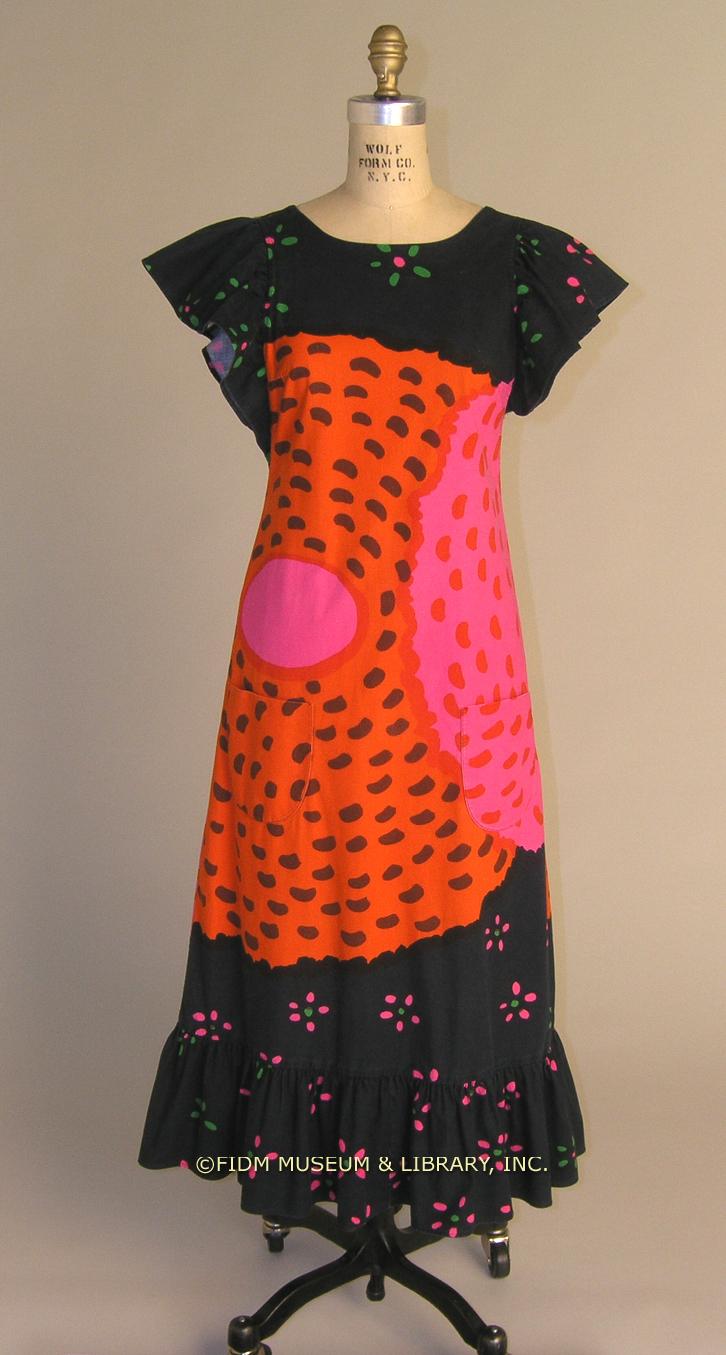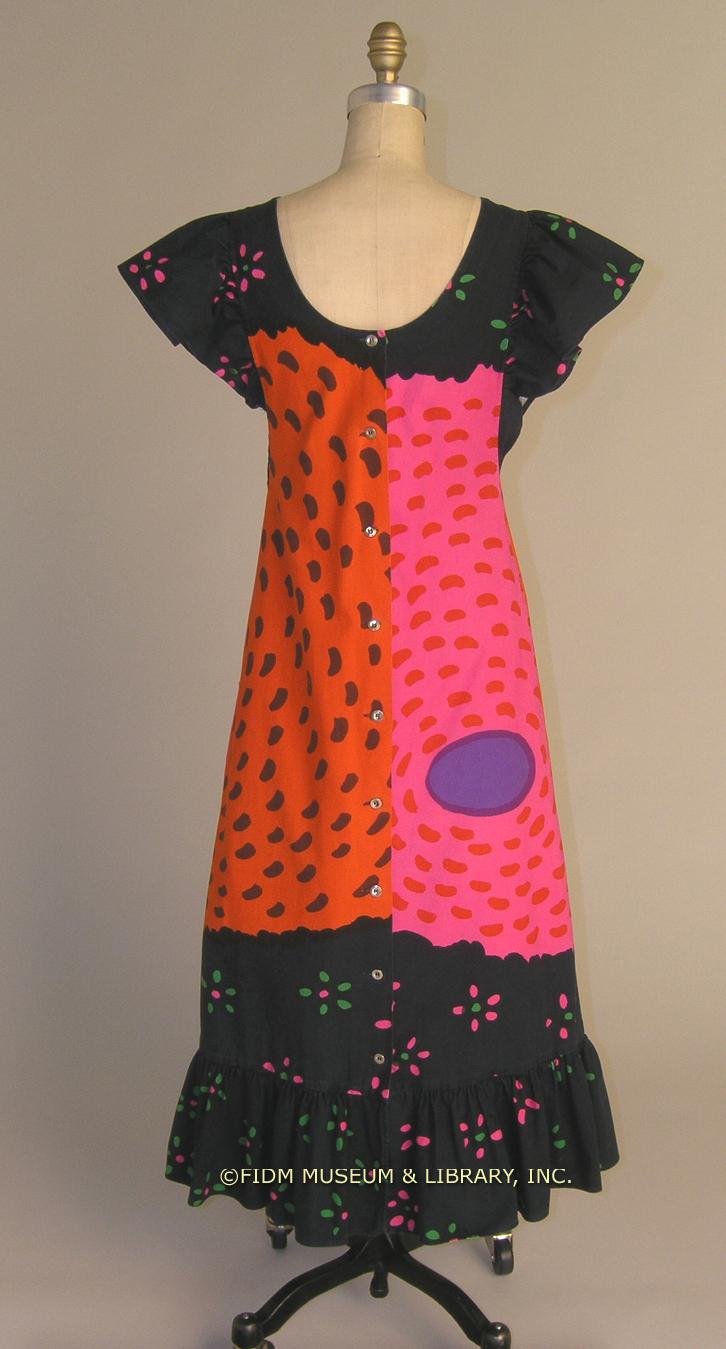With its oversized imagery and brightly clashing colors, Marimekko textiles are unmistakable. The Finnish company began in 1951 as a textile design firm specializing in hand silk-screened cotton fabric. The patterns created by Marimekko designers were a departure from traditional Finnish floral patterns, though the graphic, modern Marimekko imagery was definitely inspired by aspects of Finnish heritage and landscape. To promote their textile designs, the founders of Marimekko created a collection of unrestrictive garments utilizing their textiles. From the beginning, Marimekko garments were loose and unstructured, meant to allow freedom of movement. Marimekko gained widespread popularity in the United States when Jackie Kennedy purchased several Marimekko dresses in 1960, which she wore throughout her husband’s presidential campaign.
Belted dress
Marimekko
1972-74
Gift of Dora Lou Davis
2004.835.1AB
Marimekko’s design philosophy is not based on the concept of the eternal new. New textile patterns are gradually introduced, while old designs are kept in regular rotation. Even today, the garments designed by Marimekko are loose and unstructured, not too far removed from the earliest Marimekko shift dresses. Both then and now, the focus is on the textile design, not the actual shape of the garment. These designs were widely influential throughout the 1960s, inspiring many imitations. The Marimekko maxi dress below was worn by the donor’s wife to their 1973 engagement party.
Maxi dress
Marimekko
1973
Gift of Mr. Manu Virtamo, Consul General of Finland
2004.836.1
Marimekko’s founders envisioned their textiles as part of a larger lifestyle movement, a “part of modern interiors and modern life.”1 During the 1960s and 1970s, Marimekko fabrics were often used in interior decorating, with large Marimekko fabric panels hung on the wall as if they were paintings. By the 1990s, Marimekko designs were featured on a variety of products for the home, including sheets, towels, dinnerware, umbrellas, etc. In 2008, H&M paid the ultimate fashion tribute to Marimekko by offering a fast fashion mini-collection of garments featuring Marimekko textile designs.
1Sullivan, Mary. “Finland: Free-Form Fashions in Bright Cotton Are Made for Modern Living.” New York Times 25 Aug. 1960: 34.





I can never get enough Marimekko! Their designs always feel so modern, regardless of their age.
Diana, I feel the same! I’ve always felt that Marimekko prints are so timeless because they’re always out of fashion, i.e. Marimekko designers were/are truly doing their own thing and didn’t pay much attention to trends. Because the prints are often a bit outside of the larger narrative of fashion, they retain a freshness and visual appeal regardless of when they were created.
All the three dresses here are really very nice. I loved to read your blog. It has covered all new and creative designs and new patterns…
I really like the fabric design in the first (black and white) dress. Very abstract and geometric. Actually, it kind of reminds me of the keys of a piano…so maybe not completely abstract after all. 🙂
I’d never thought of the black and white print that way, but you’re right, it does resemble piano keys!
When I moved to Finland and looked around, Finnish design seemed to me to be in a time warp, but since then all things retro are in again. A case of ” it’s so out it’s in” and Marimekko is a case in point. They just do what they do, and fall in and out of greater fashion cycles.
BTW Marimekko means Mari’s dress – quite a quaint start to such a famous brand.
Anni
Very good modern dress… I really like the fabric design in the first (black and res) Mari’s dress.
Thanks for share